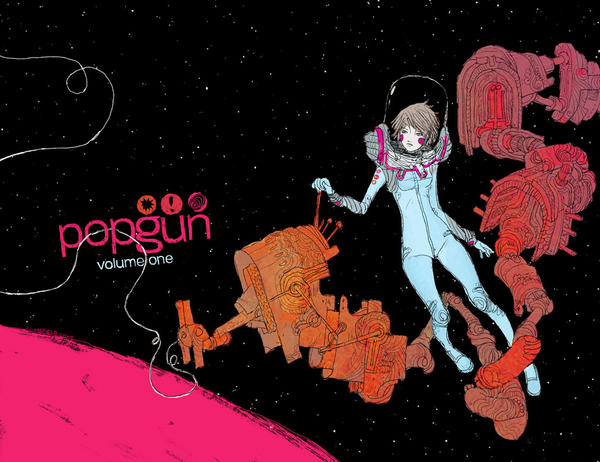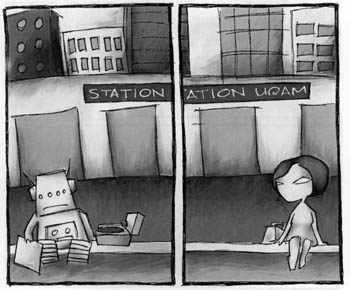At this point, so many think pieces have been written about Lena Dunham and her show “Girls” that this post is completely redundant. Still, I continue to see and hear inflammatory stuff about her whenever her name comes up in conversation with my friends, and whenever I read comments about her show on the Internet. So I’ve been thinking about her a lot, and I feel like sharing.
It is so clear to me that Lena Dunham is incredibly self-aware. It was confirmed for me when I read her great book, Not that Kind of Girl, which included such self-deprecating quotes as “I would be a horrible girlfriend at this point in my life, because I’m both needy and unavailable.” Dunham is a deeply insecure person who clearly knows her worst qualities, and contrary to popular belief, she’s aware of her privilege. By creating “Girls” and creating the character of Hannah Horvath, Lena Dunham is poking fun at the flaws she knows she has.

So even though Hannah Horvath is completely lacking in perspective, Lena Dunham isn’t. Dunham’s portrayal reminds me of how Louis CK described his character on “Louie.” He said something along the lines of “Louie is me, but amplified and with worse luck.” CK is purposely portraying a version of himself, but with less professional success and less self-awareness. Dunham is the same way, playing a woman with a similar background but with professional turmoil and a severe lack of perspective.
“Girls” is, in part, an exercise in empathy, testing the audience’s patience to see how much we’ll put up with. The characters of “Girls” are almost all seriously unlikable, and that’s not because Dunham realizes how terrible the characters are. Do you really think Dunham is trying to convince us these characters are always good, funny, likable people? Do you think Dunham could really portray characters this hilariously unlikable if she was a terrible person herself?

Good people tend to be the ones that know how to depict bad people. It reminds me of a comment on the AV Club about the new Netflix series “Love,” featuring Paul Rust as the terrible fake ‘nice guy’ Gus. One commenter said something along the lines of, “People think Paul Rust is writing this show as his wish fulfillment, trying to convince people he’s a nice guy. But Rust realizes that Gus is just a ‘nice guy,’ not a genuine nice person.” Both Rust’s acting and his writing of Gus require the eye of an actor/writer who understands that the character is a unique brand of terrible.
Similarly, the cast and writers of “Girls” are able to succinctly establish the unique brands of terrible that each character inhabits. This is especially true in the show’s current fifth season. There’s one particularly brilliant, short scene in “Japan,” when Hannah Skypes with Marnie (Allison Williams), who hasn’t been seen since her wedding two episodes ago. Through one simple gesture—Marnie’s guttural, quasi-cultured pronunciation of ‘Ecuador’—Williams instantly reminds the viewer of all of Marnie’s worst qualities. It’s amazing how such a short clip can epitomize Marnie’s pretentious, self-congratulatory nature, while simultaneously doing the same for Desi (Ebon Moss-Bachrach), Marnie’s insufferable husband. Desi showers completely nude in the outdoor shower in the background, and somehow you can just tell how fucking cool he thinks he is. As Amber Dowling from Indiewire said, Marnie and Desi are “two privileged people pretending to be struggling artists,” and this scene is the perfect short, sweet scene to remind us of how hilariously awful they are.

Really, the only wholly self-aware characters on the show are Ray (Alex Karpovsky), Elijah (Andrew Rannells), and, increasingly, Shoshanna (Zosia Mamet). And even those three are fucked up in their own ways. Still, their existence shows that Dunham does have the outside perspective of the other characters’ faults. Just look at Shosh’s hilarious, unbelievably cathartic drunken monologue in “Beach House” as she, one by one, tears Hannah, Marnie, and Jessa (Jemima Kirke) to pieces. Co-written with Jenni Konner and Judd Apatow, that episode should be yet another conclusive reminder that the writers are completely conscious of these characters’ worst qualities and what makes them that way.
That’s not to say that “Girls” is flawless, or that the characters are all perfectly written. Sure, there should probably be more actors of color in the show for its diverse New York City setting (although Hannah and her friends are the types of people who probably would have mostly white friends). Jessa, despite being played by one of the most engaging performers on the show, has been a very inconsistent character, flitting between a stereotypical hippie free spirit and an incredibly cruel, borderline sadistic woman throughout the show’s entirety. Last season in particular, Jessa acted so viciously to Hannah, and there was no real reason to explain it.

This season has sought to rehab Jessa’s character a little, though. We see her actually trying to be a good person by putting Hannah’s desires above her own when she finds herself developing feelings for Hannah’s ex-boyfriend Adam (Adam Driver). This finally reached a head in the latest episode, “Old Loves,” in which Jessa finally gives up trying to be kind and pushes Hannah away so that she won’t feel as bad about sleeping with Adam. Jessa acts cruelly here, bluntly agreeing when Hannah half-jokingly suggests they stop being friends, but at least the motivations behind Jessa’s behavior make sense this time. It’s unclear if these same motivations could partially explain the way Jessa acted last season, when she was first becoming friends with Adam, but regardless, this season is thankfully allowing Jessa to grow up a little.
All the characters are growing up, step by step. Marnie is sure to finally get it through her head how awful Desi is this season, and as joyful as it is to watch their trainwreck of a marriage, you have to feel a little bad for her—she really doesn’t realize how terrible this guy is. Hannah, too, may behave inappropriately by deleting the nudes of Fran’s exes off his phone without asking him (and by confronting him in the middle of school with one of her students watching), but she’s generally sympathetic because her insecurities and issues are relatable and justified. And Shosh’s journey this season is the most pleasantly surprising—her decision to remain in Japan instead of running back to New York (à la Hannah post-Iowa) shows that the writers aren’t afraid to let their characters learn from past mistakes and actually grow into newer, happier, healthier people.

Maybe this new willingness to allow the show’s characters to progress comes as a result of the recent announcement that this will be the second to last season. Much of “Girls” has seemed a little too meandering and unfocused for my tastes, and a big part of that is the 30-minute runtime; the show’s quick pace makes it easy and fun to digest, but it’s difficult to accomplish much character development with those constraints, especially with seven main characters (the girls + Adam, Ray, and Elijah). As each of the characters move into new positions this season, though, it seems like the show is finally building towards a logical endpoint.
Bringing it back to Lena Dunham herself, there’s one more big reason the show sticks with me, one more reason why I find Hannah a relatable character, one more reason why I’m convinced Dunham knows what she’s doing. Many of the criticisms of the show seem to take issue with Dunham’s view of New York City; it’s an overused setting that’s often romanticized by young writers and artists, and people view the characters of “Girls” as those hopelessly romantic young people who think New York will be this life-changing place that will act as a catalyst for their professional and romantic growth.

Those people are right, and once again, it’s intentional. There’s a tendency among us young writers—writers like me, Hannah Horvath, almost all my English major friends, and my fellow writers at the Michigan Daily—to be obsessed with making a narrative out of our lives. We view years like seasons of television, our gradual changes like character development, our new jobs and new romantic relationships like new plotlines. We are desperate to structure our lives like the art we take in, to act like everything taught us something and everyone mattered and everything has its discrete role in influencing the rest of our lives.
Young writers are desperate for that “New York” setting, that magical far-off place where we spend a summer or a year or the rest of our lives in the hopes that it will change us and show us how big the world is and be the real place where we can flourish. You can tell that Lena Dunham has felt this idealism before, this young artistic desire to understand the narrative of her life. It’s there from a time before the pilot episode even took place, when Hannah moved off to New York City. It’s there when she starts working at GQ, and when she moves away to go to Iowa, and when she visits home. Everywhere, you can see Hannah’s mind turning to whatever new thing she thinks will make her happy, will fulfill her. The arc of her life that she conceives is rigid, and when reality disrupts it, the arc molds into a new shape to compensate.

Maybe I’ll go to New York City and be a famous writer and live with all my best friends and have the time of my life, Hannah thinks at the start of the series. Or no—maybe I will move to Iowa and become the Great American Writer I truly imagine myself to be, and when I come back to New York, everyone will be waiting for me. When Hannah makes the choice to stay away from Adam and be with Fran at the end of the fourth season, she’s making a bold new step—not to once again fall into the role that she assumed was required, but to acknowledge what the actual right choice for her is. This season, though, has shown that even that isn’t as easy as it sounds; ‘healthy’ isn’t always what it appears, and it’s not as simple as choosing to embrace the new when the new is so terrifyingly ambiguous.
Hannah, though self-absorbed, isn’t fundamentally a selfish or vain person. She just wants the life she thinks she’s supposed to have. The life all of us writers think we’re supposed to have when we’re 20, with the skyscrapers, the quirky neighbors, the loving romantic partners, and the close-knit group of friends. Lena Dunham knows how attractive that fantasy is. She knows how close we can get to achieving it. But she also knows how dangerous it is to be so enamored with that preconceived notion of success when you place so much weight on it.
I see Hannah Horvath everywhere. I see her around campus, in media, and, most frighteningly, in myself. Maybe that’s what’s so terrifying about how unlikable she is. It’s like seeing a reflection of yourself and laughing, crying, and cringing at it. We can be annoyed by the unrealistic dreams Hannah has and the unorthodox way she has of straining to achieve them. But every once in a while the smile fades and we wonder that same thing: what if this happens to us?














